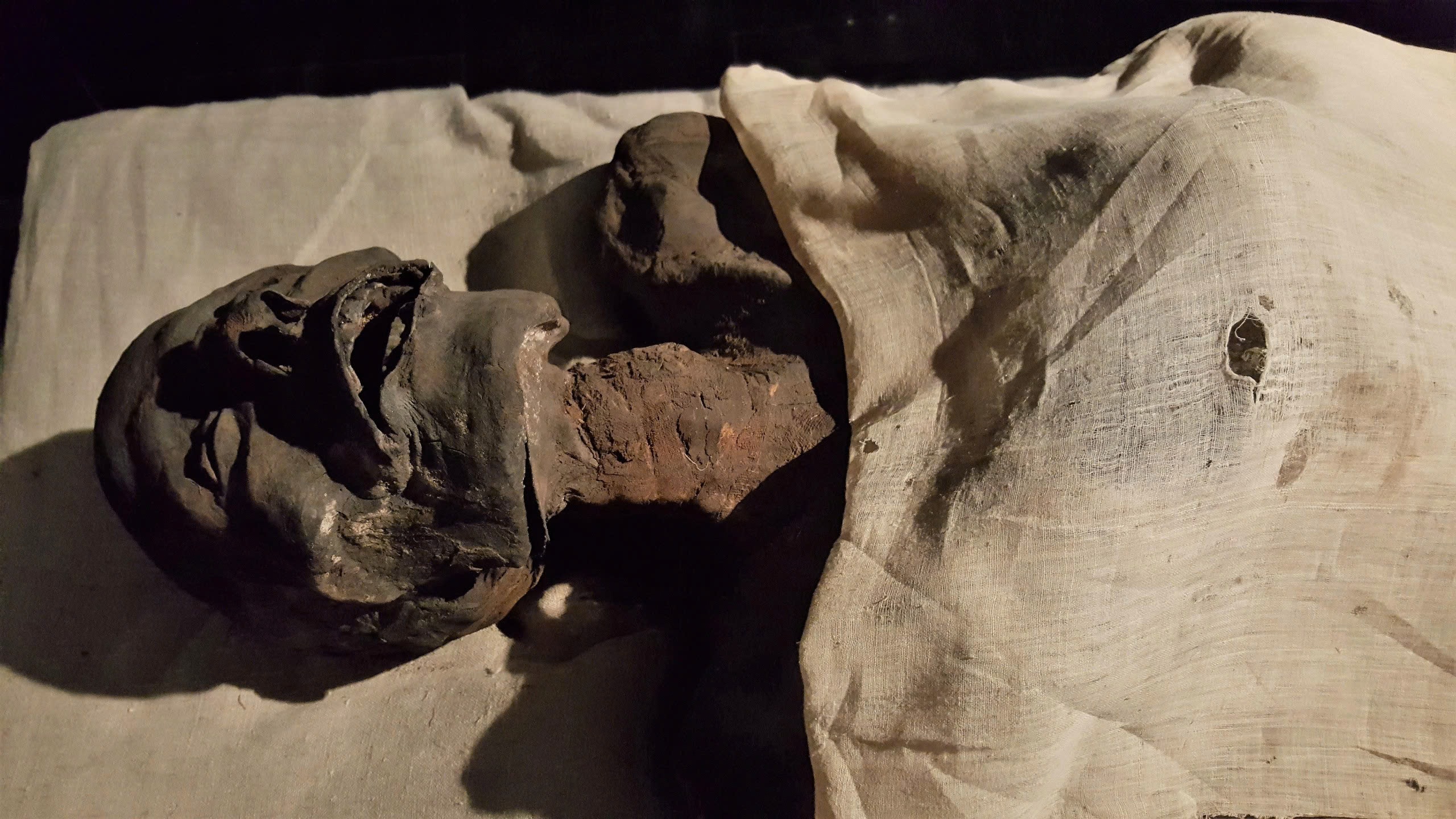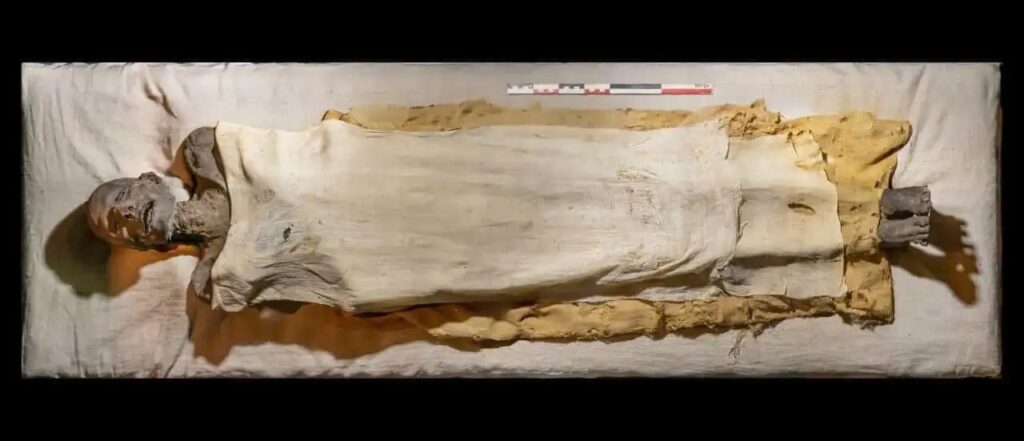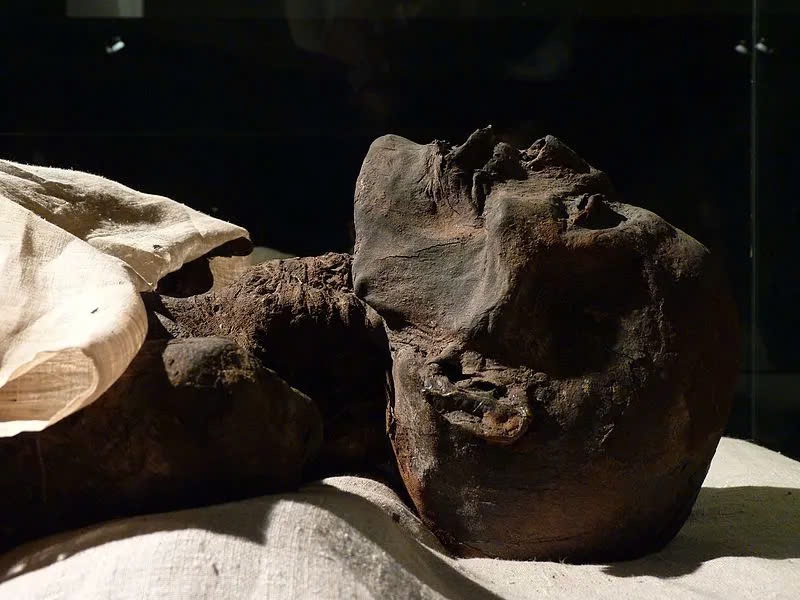A Pharaoh’s Rest Disturbed
Ramesses I, the founder of Egypt’s 19th Dynasty, was originally buried in the Valley of the Kings. However, looting in antiquity forced priests to relocate his mummy to the Royal Cache at Deir el-Bahari for safekeeping. In the mid-19th century, grave robbers—likely the Abu-Rassul family—stole and sold the mummy to Mustapha Aga Ayat, a Turkish vice-consul in Luxor. From there, it was acquired by Dr. James Douglas, who transported it to North America around 1860.

Lost in a Museum of Oddities
For over a century, the mummy was displayed in the Niagara Museum and Daredevil Hall of Fame in Canada, mislabeled and overlooked as just another curiosity. Its true identity remained unknown until Canadian collector William Jamieson purchased the museum’s collection in the 1990s and enlisted Egyptologist Gayle Gibson to investigate further.

Identifying Ramesses I
A team at Emory University conducted CT scans, X-rays, and radiocarbon dating, confirming the mummy’s royal status. Key evidence included:
- Crossed-arm position, a hallmark of Egyptian pharaohs.
- Mummification style consistent with early 19th Dynasty techniques.
- Facial structure resembling that of Seti I and Ramesses II.

A Pharaoh Returns Home
In 2003, Emory University facilitated the repatriation of Ramesses I’s mummy to Egypt, where it was received with honor. Today, it resides in the Luxor Museum, restored to its rightful place as a ruler of Egypt.
This remarkable journey—from ancient Thebes to Canada and back—underscores the significance of historical preservation and the triumph of science in reclaiming lost heritage.

